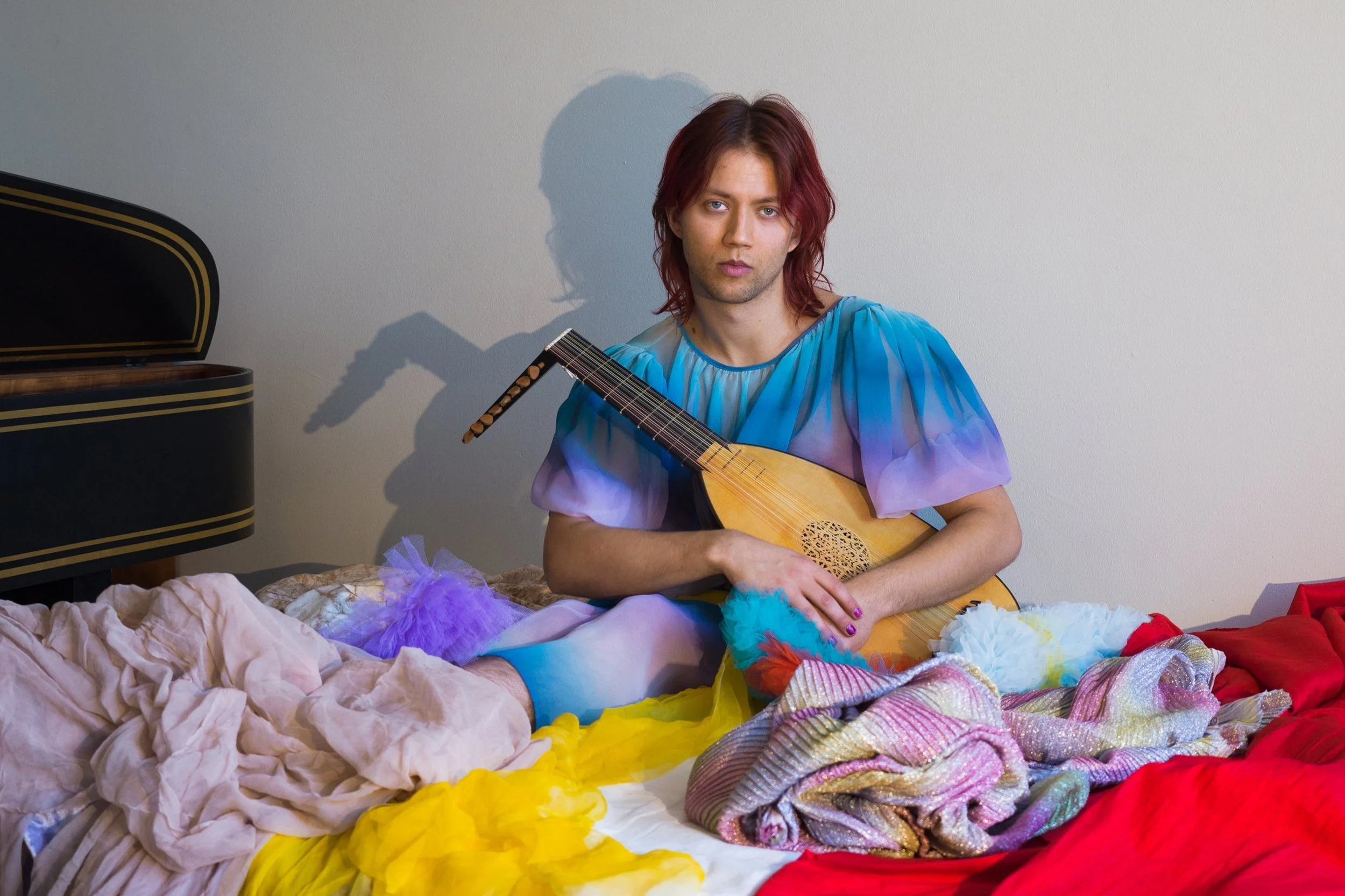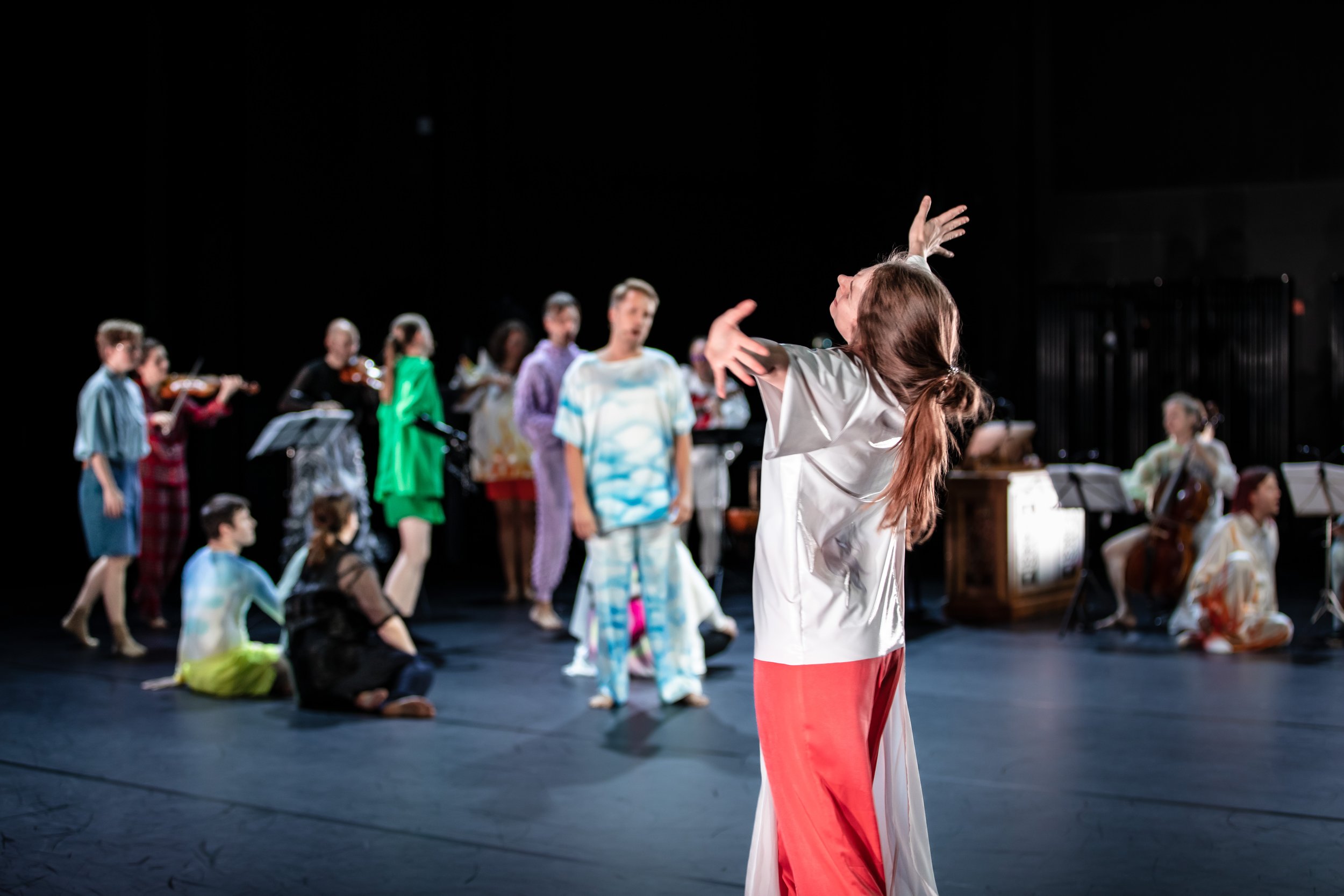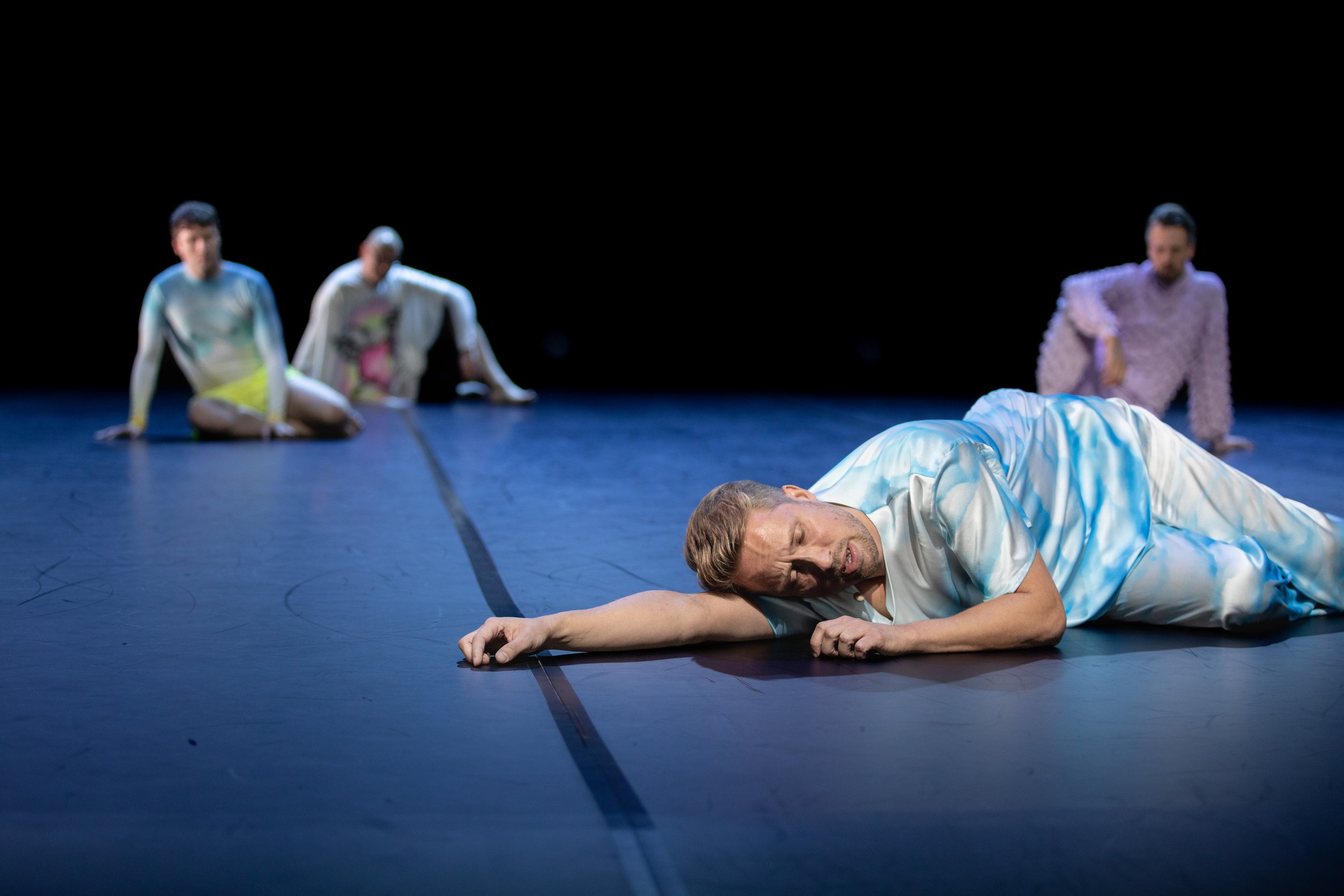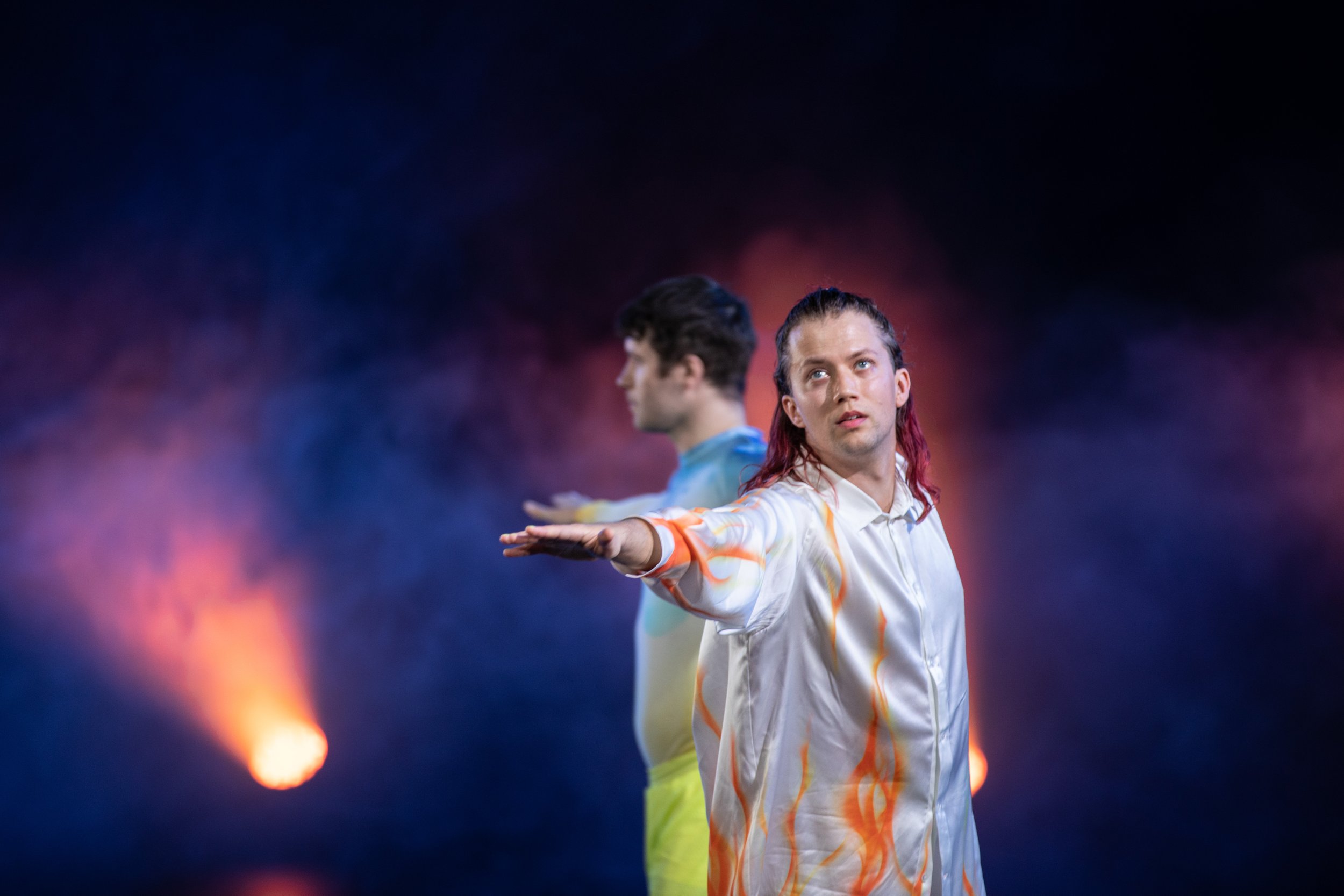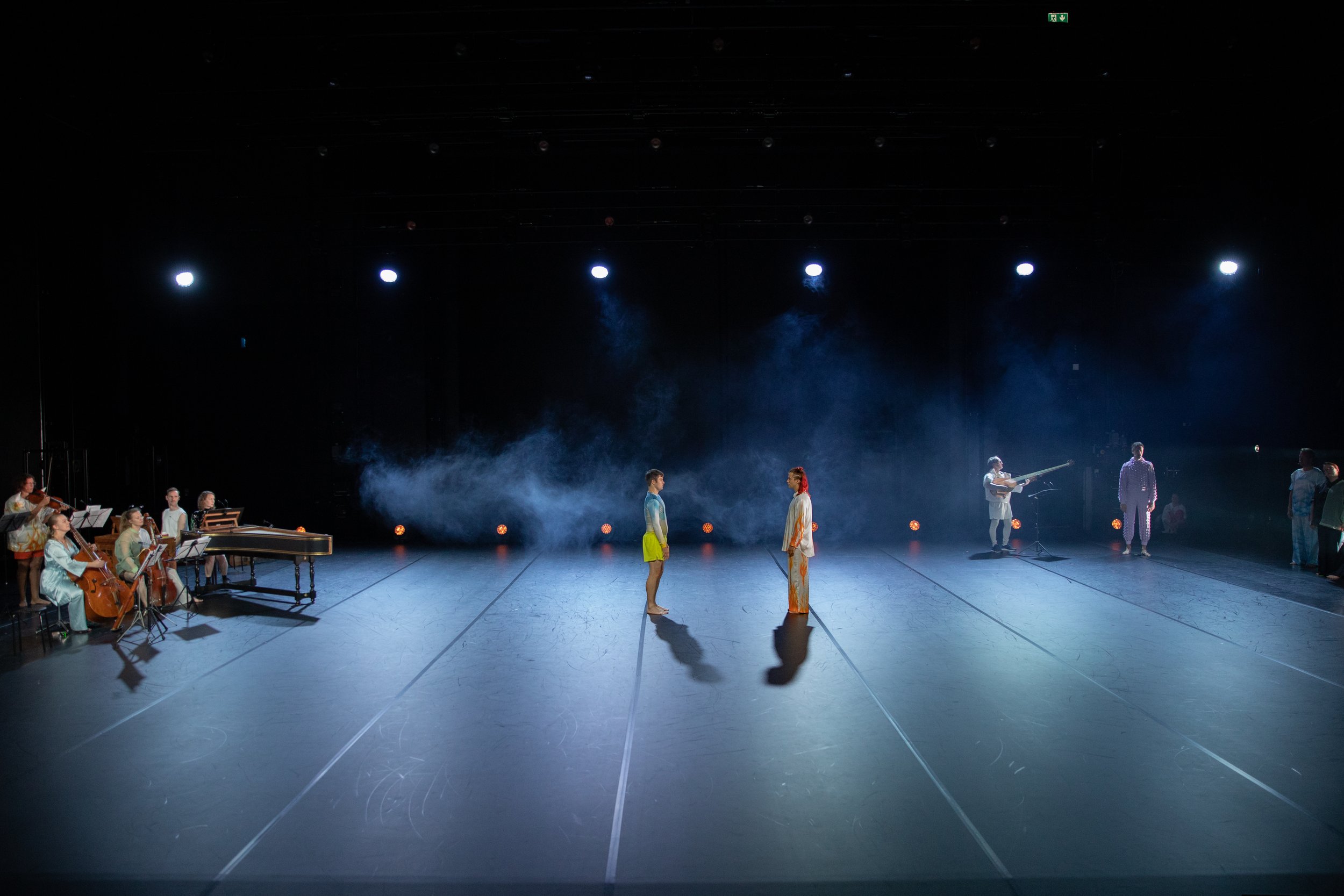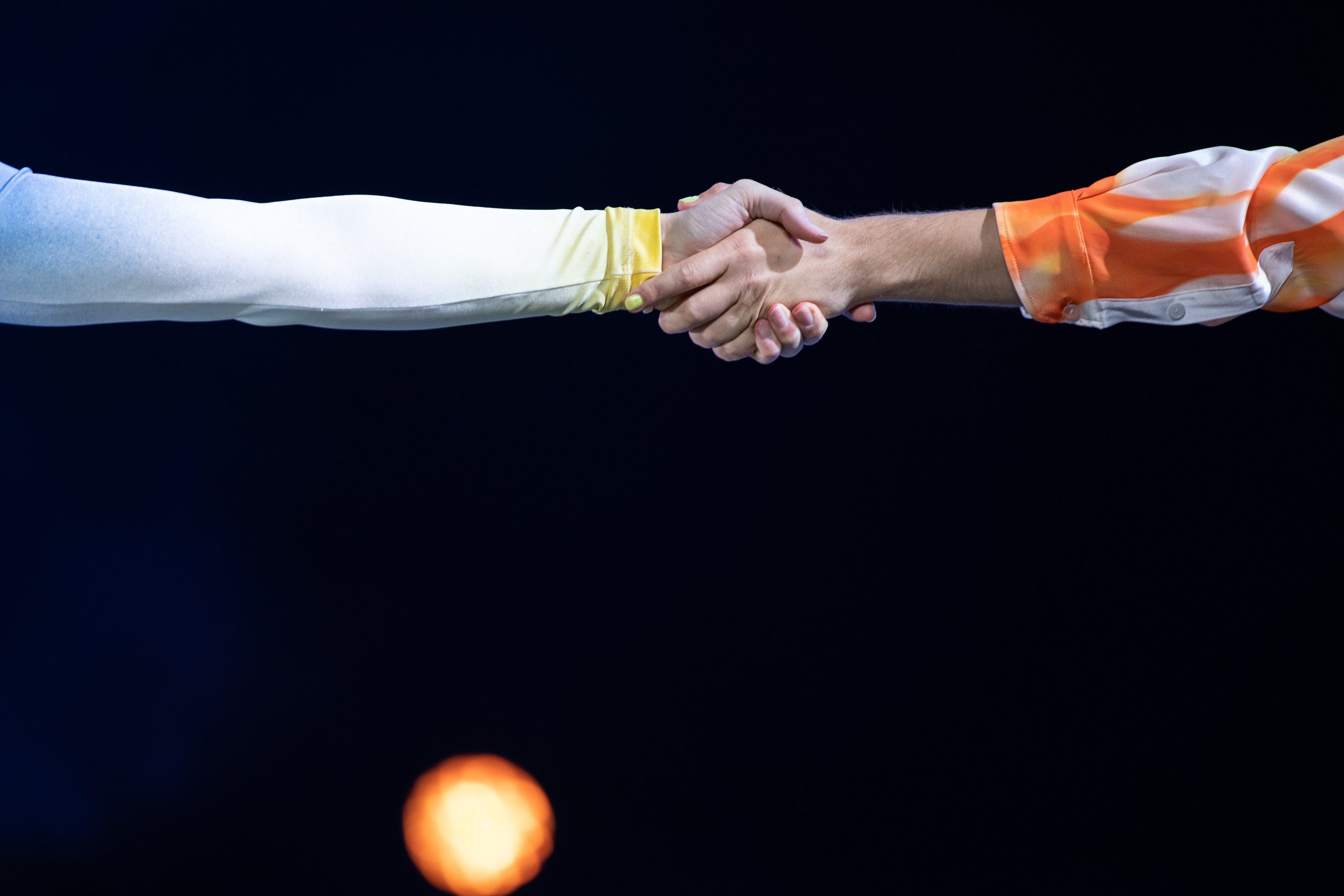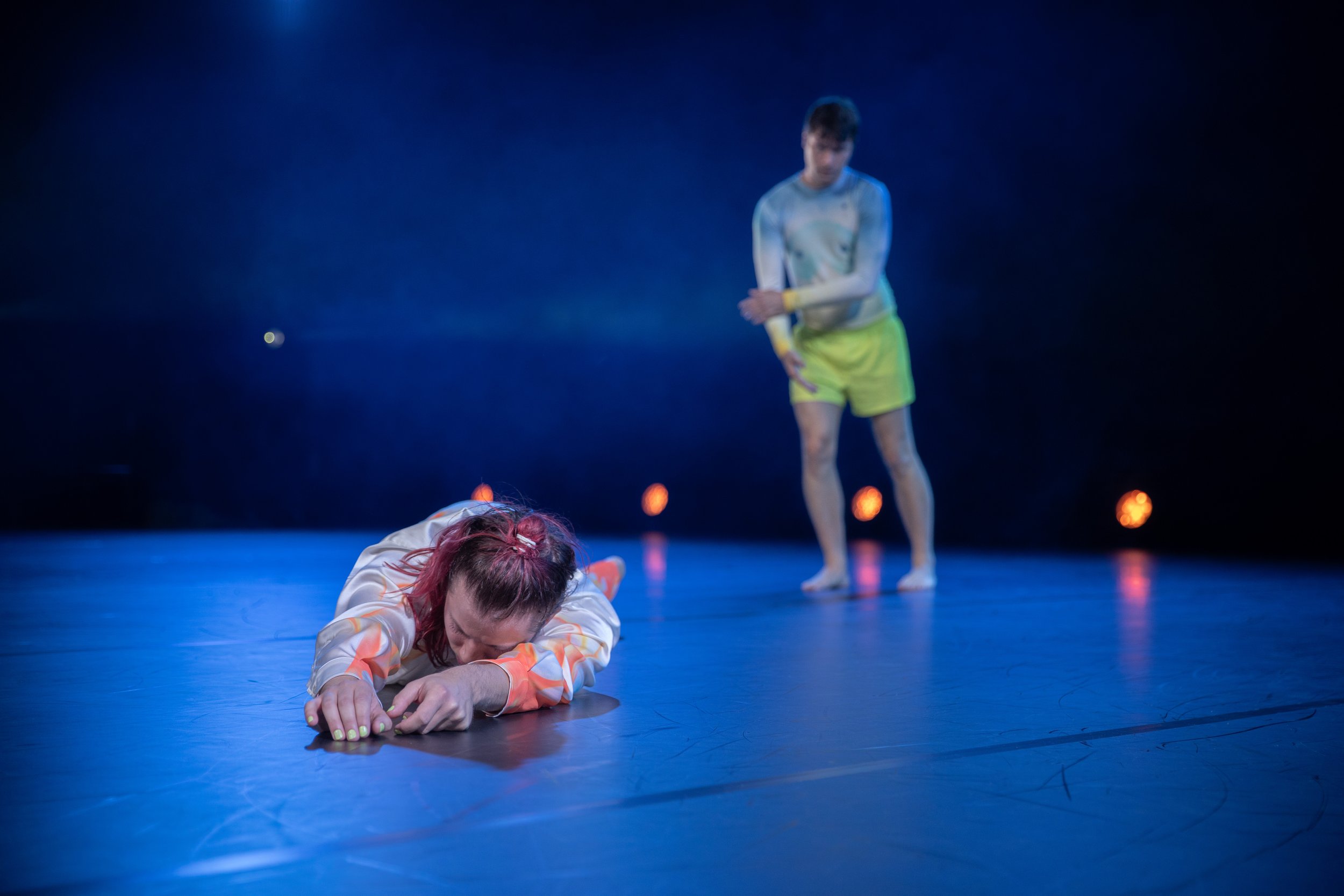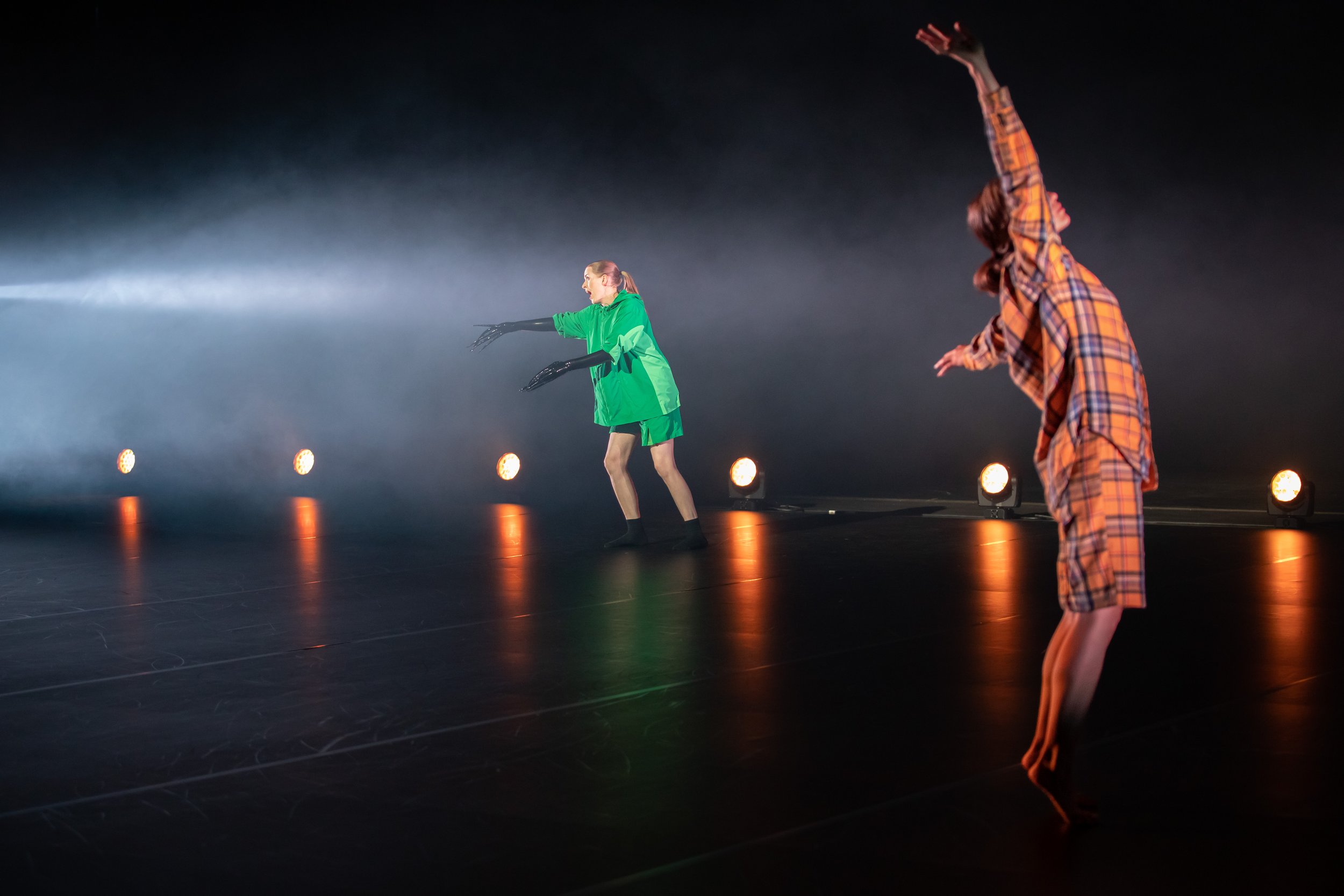Marianna Henriksson & Anna Mustonen: Eros
Eight musicians, five dancers and five singers surrender to the fluctuating vibrations between dance and music.
In the photo: Pie Kär. Photo: Hertta Kiiski
It is a reach that never quite arrives, bittersweet.
The ancient Greek word eros contains the notion of lack. Eros is the desire for something that is not present. As I attain it, my longing ceases. Distance is the prerequisite for erotic desire; it is moved by distance. Eros inserts itself between us and densifies the space between.
…electrified by desire so that they touch not touching -
In the performance, dance and music are often intertwined, sometimes at different tracks, continuously sharing the same space. Eight musicians, five dancers and five singers surrender to the fluctuating vibrations between dance and music. The dance and music yearn for each other, gently reaching towards one another.
- the way they intersect may feel like eros to you.
The choreography of the piece lies in the desire to approach, in the gestures of reaching out. It is dance from the moment touch has not yet taken place. It is about approaching when tentativeness and tension are allowed to be seen and the other is not taken into possession.
In early Italian Baroque music, eros is the prolonged desire of dissonances and suspensions to resolve towards consonances. Eros lies in the meaning of song lyrics intertwined with abrasions, projections and frictional reachings-out of the music. Sound fluctuates between us as vibration in the air, reaches the ear canals, and enters the body. A slight movement takes place.
For in this dance the people do not move. Desire moves. Eros is a verb.
Music: Biagio Marini – Claudio Monteverdi – Giovanni Felice Sances – Barbara Strozzi
Quotes: Anne Carson: Eros the Bittersweet (1986)
More information about the performance (texts, bios and lyrics) available on zodiakklubi.com/eros.
Credits
Assembling and concept: Marianna Henriksson and Anna Mustonen
Choreography: Anna Mustonen
Musical director, harpsichord and organ: Marianna Henriksson
Performers: Hanna Ahti, Mikko Hyvönen, Anna Kupari, Pie Kär and Eleni Pierides, dance;
Tuuli Lindeberg and Sirkku Rintamäki, soprano; Teppo Lampela, alto;
Juho Punkeri, tenor; Jussi Lehtipuu, bass;
Finnish Baroque Orchestra: Anne Pekkala and Hannu Vasara, violin; Hanna Pakkala, viola; Louna Hosia, cello; Anna Rinta-Rahko, violone; Jani Sunnarborg, dulcian; Eero Palviainen, lute and baroque guitar
Dramaturge: Masi Tiitta
Costume design: Piia Rinne
Lighting design: Heikki Paasonen
Sound design: Timo Kurkikangas
Producer: Riikka Thitz / i dolci
Internship / dancer: Iiris Miettinen (Danish National School of Performing Arts / Den Danske Scenekunstskole)
Assistant for lighting design: Erno Seppälä (University of Arts Helsinki, Theatre Academy, VÄS)
Dressmaking: Veera Vuorisalo and Anneli Partanen
Airbrushing: Eija Koponen
Costume of Jussi Lehtipuu: Henrik Vibskov
Production: i dolci, Zodiak – Center for New Dance, Finnish Baroque Orchestra, Helsinki Early Music Festival
Supported by: Jenny and Antti Wihuri Foundation, Kone Foundation, Uusimaa Regional Fund of the Finnish Cultural Foundation, Arts Promotion Centre Finland
Residence: Santarcangelo dei Teatri (IT) / Finnish Cultural Foundation
Performance photos: Sinem Kayacan
Duration: 80 minutes
Eros is a part of the programmes of i dolci, Zodiak – Center for New Dance, the Finnish Baroque Orchestra and the Helsinki Early Music Festival.
Media picks
“Eros affirms the physical charge in baroque music (…) Musicians and dancers intertwine in a single ensemble, subtly exploring charge, music and movement.”
“The experience speaks through the ages, as long as you reach out a little.”
“Strozzi was (...) in the center of the programme. The most famous female composer of the early 17th century was indeed a master of sensitivity when it comes to harmonic coloring and underlining of emotions.”
“It takes a while before the applause starts, in the desire not to lose the meditative dimension of what was there before us, but is no longer present.”
Interviews and more
Interview with Marianna Henriksson and Anna Mustonen / Helsinki Early Music Festival blog 12.8.2022
Interview with soprano Tuuli Lindeberg and dancer Eleni Pierides / Zodiak Diary 13.9.2022
“To me, making art is not about knowing what works in advance. It is constant asking - could it be like this here or could we be like this here. The performance forms in relation to the performance space and it is important that the space can affect the performance and the bodily being of the performers.” / Anna Mustonen, Helsingin Sanomat 21.9.22
Performances
6 October 2022 at 19:00 Zodiak & Helsinki Early Music Festival, Dance House Helsinki
8 October 2022 at 19:00 Zodiak & Helsinki Early Music Festival, Dance House Helsinki
9 October 2022 at 15:00 Zodiak & Helsinki Early Music Festival, Dance House Helsinki
11 October 2022 at 19:00 Zodiak & Helsinki Early Music Festival, Dance House Helsinki - Post-performance discussion
12 October 2022 at 19:00 Zodiak & Helsinki Early Music Festival, Dance House Helsinki
13 October 2022 at 19:00 Zodiak & Helsinki Early Music Festival, Dance House Helsinki
